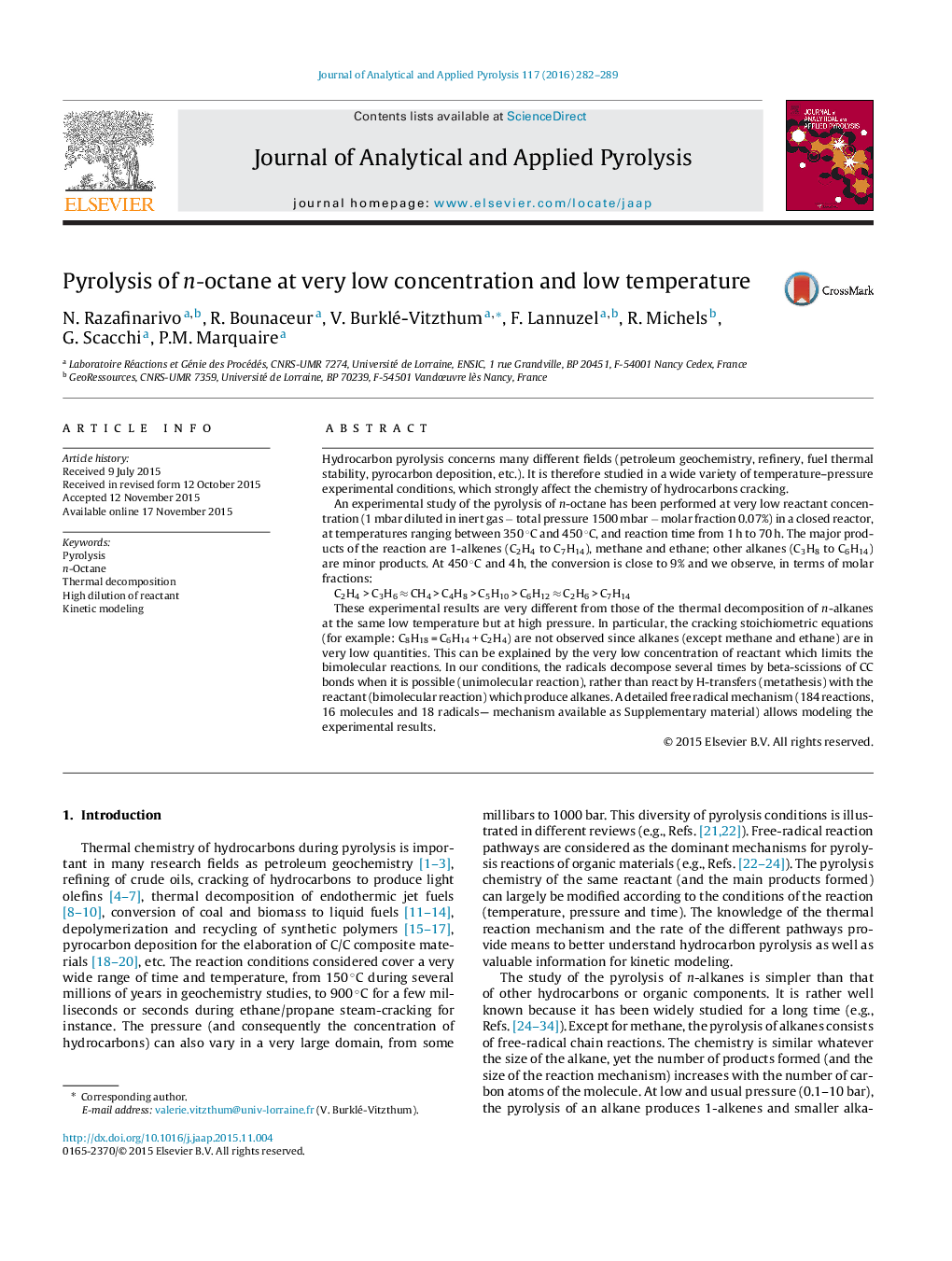| کد مقاله | کد نشریه | سال انتشار | مقاله انگلیسی | نسخه تمام متن |
|---|---|---|---|---|
| 1196640 | 1492960 | 2016 | 8 صفحه PDF | دانلود رایگان |

• The pyrolysis of n-octane has been studied at very low concentration and 350–450 °C.
• The major products are 1-alkenes (C2H4 to C7H14), methane and ethane.
• These experimental results are very different from those obtained at high pressure.
• The very low concentration of reactant limits the bimolecular reactions.
• A detailed kinetic model (180 reactions, 51 species) allows modeling the results.
Hydrocarbon pyrolysis concerns many different fields (petroleum geochemistry, refinery, fuel thermal stability, pyrocarbon deposition, etc.). It is therefore studied in a wide variety of temperature–pressure experimental conditions, which strongly affect the chemistry of hydrocarbons cracking.An experimental study of the pyrolysis of n-octane has been performed at very low reactant concentration (1 mbar diluted in inert gas − total pressure 1500 mbar − molar fraction 0.07%) in a closed reactor, at temperatures ranging between 350 °C and 450 °C, and reaction time from 1 h to 70 h. The major products of the reaction are 1-alkenes (C2H4 to C7H14), methane and ethane; other alkanes (C3H8 to C6H14) are minor products. At 450 °C and 4 h, the conversion is close to 9% and we observe, in terms of molar fractions:C2H4 > C3H6 ≈ CH4 > C4H8 > C5H10 > C6H12 ≈ C2H6 > C7H14These experimental results are very different from those of the thermal decomposition of n-alkanes at the same low temperature but at high pressure. In particular, the cracking stoichiometric equations (for example: C8H18 = C6H14 + C2H4) are not observed since alkanes (except methane and ethane) are in very low quantities. This can be explained by the very low concentration of reactant which limits the bimolecular reactions. In our conditions, the radicals decompose several times by beta-scissions of CC bonds when it is possible (unimolecular reaction), rather than react by H-transfers (metathesis) with the reactant (bimolecular reaction) which produce alkanes. A detailed free radical mechanism (184 reactions, 16 molecules and 18 radicals— mechanism available as Supplementary material) allows modeling the experimental results.
Journal: Journal of Analytical and Applied Pyrolysis - Volume 117, January 2016, Pages 282–289